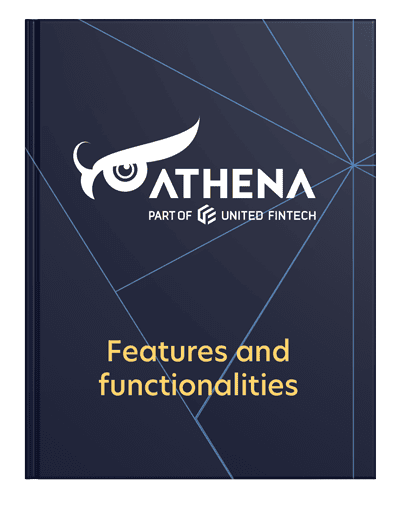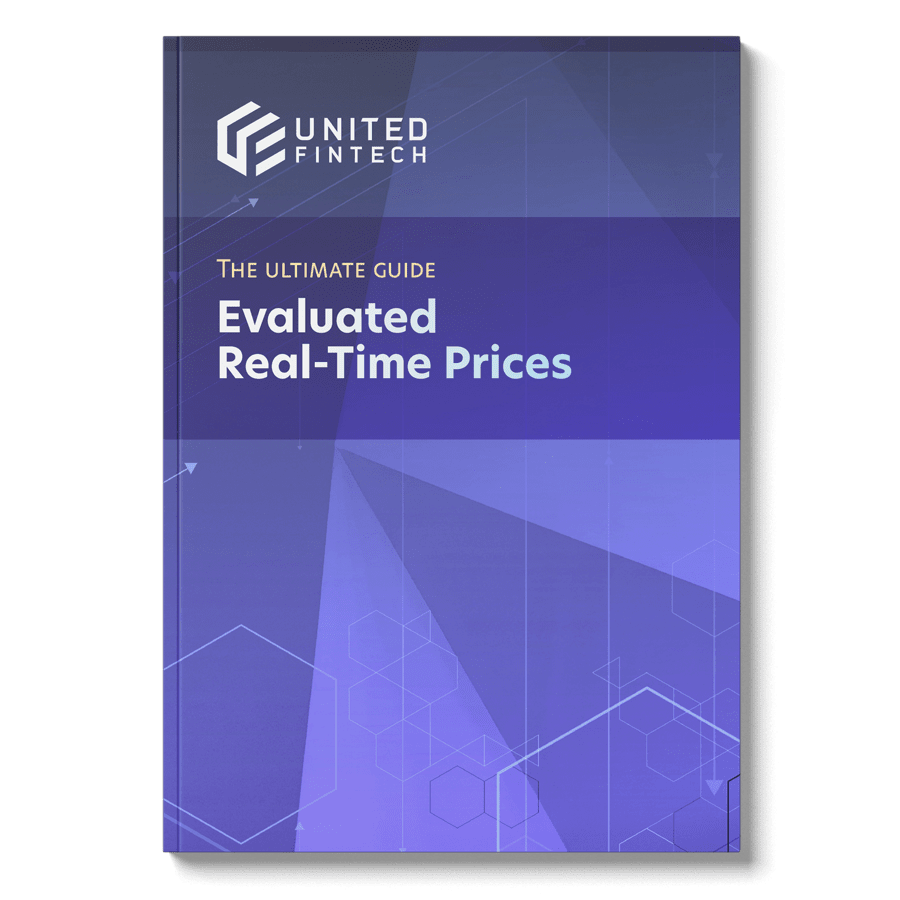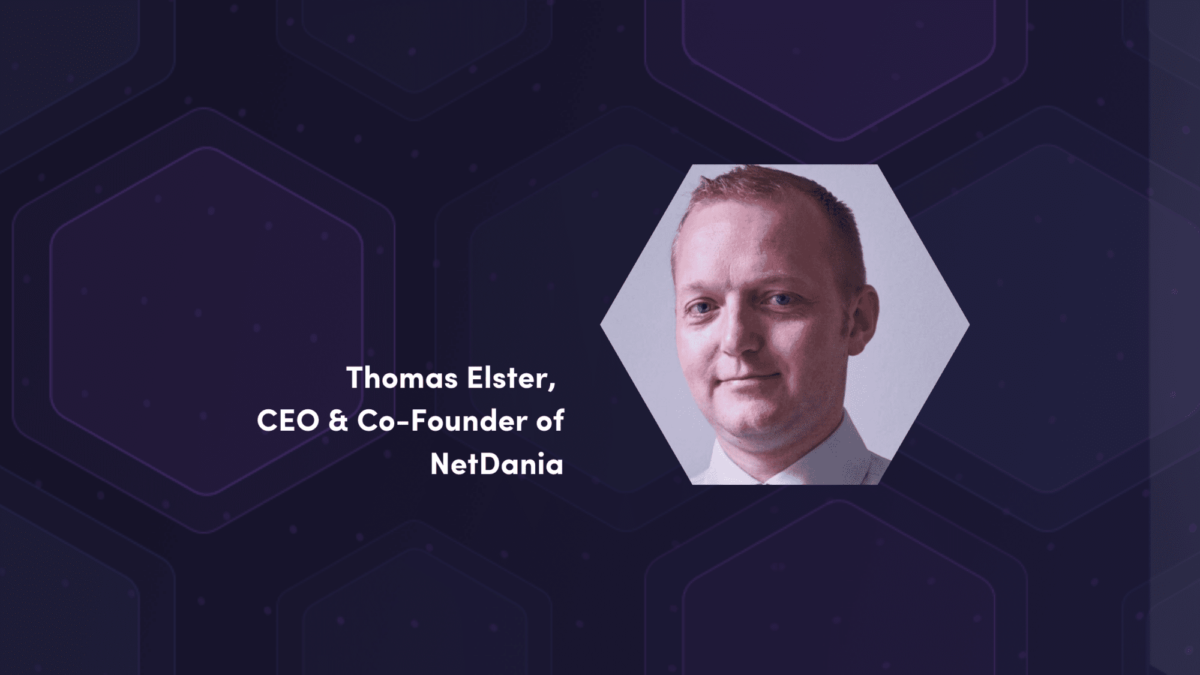Tell us about your background
I co-founded NetDania in 1998. I attended Copenhagen Business School and also have a Computer Science degree, so because of my technical background, my initial focus was on product development. I was in a team responsible for creating our first products, which included client- & server-side components required for streaming data, mainly to websites, in real-time.
Over the last 20+ years, I have pretty much worked across all areas of the business – and as demand for our products has increased, and our product portfolio has broadened, we have been able to grow our team in Copenhagen, Romania and London. This has freed up some of my time to focus on more strategic areas of the business.
I am still very much a ‘techy’ at heart and I am very proud of the products we have created at NetDania.
What was the gap in the market you spotted when setting up the business?
We were pioneers in real-time streaming price technology, having spotted a gap in the market related to streaming prices to websites in real-time. At the time, people largely just saw static information on a website. Our technology was a game changer and gave us an edge, allowing us to build momentum. We then began to create different ways to visualise the data using tickers, watchlists and charts, for example, and the business has continually evolved since then.
How has NetDania been able to stay ahead of the game?
Streaming data in real-time is now standard so we’ve had to look at other ways to stay one step ahead. At NetDania, we’ve always been quick to embrace new technologies – for example, even before the first smartphones came out, we began the development of a mobile app for financial market data display. We’ve always seen a strong use case for market data on the mobile and this eventually led to the mobile app we have today.
And, for the past 20+ years, we’ve always strived to develop our solutions with a modular architecture in mind, identifying valuable sub-products within our products. This has enabled us to easily expand our product suite to cater for the needs of fintechs looking to build the same solutions to solve the same problems. For example, financial institutions wanting to create their own mobile apps can use our native mobile charts which are already built with all the analysis tools required for any market data. This is one of the highest user-rated finance apps available. Financial institutions can leverage the years of work and experience we’ve put into this and don’t need to build this themselves.
With NetStation, our market information terminal, we have differentiated our product by also interfacing with a wide range of alternative data sources, offering cost savings, and the option for customers to publish their own data on the platform too. This means that, unlike our main competitors in this space, you are never bound to a specific data source or provider.
What do you enjoy most about your job? What motivates you?
I love seeing growth, creating awesome products, and seeing those being used in the market. I believe that, as part of United Fintech, we can grow faster than ever before.
Do you have a flagship product or do you focus on them all equally?
We have two sides of our business, B2B and B2C. As we started out without any marketing, we tried to get as many users as possible to our website and mobile app. We wanted them to drive demand for NetDania products, like charts, from their brokers. We currently have over 700,000 registered uses and more than 200,000 unique users on our mobile app. We definitely built strong brand awareness by going down this route.
Our main business, however, has always been B2B. Our core products are data feeds, charts and our NetStation market information terminal which comes with a mobile and desktop app. We are continually investing heavily in these products to reflect client needs.
What are Netdania’s USPs?
Our biggest USP across all our products is our flexibility in terms of the products being customisable and easily configurable. You can take any NetDania product and truly make it your own. Besides that we run an extremely ambitious SLA with 24/7 phone and online support, which we believe should be a must-have for any business in this area relying on third-party services.
In addition, we always look to provide added value to clients. In terms of NetStation, we provide this in a number of ways. Firstly – and significantly – it is far more reasonably priced than competitor terminals. Secondly, we are independent when it comes to data sources, and are connected to lots of different data sources including alternative data sources, as already highlighted, and clients can also add any of their own sources into our platform. This is a major differentiator. Clients can publish their own data through a single API into NetDania and even optionally monetize their data further, if they want to share it more widely on our platform on a revenue share, beyond their internal usage.
In terms of our charts, besides flexibility, I believe we stand out as the only company to have created truly native financial mobile charts – i.e. not just HTML charts that you embed in a web view. This gives us an edge when financial institutions are looking into mobile solutions.
Who are your products aimed at?
We have a strong position in the corporate FX and treasury segments of the market when it comes to NetStation and Data Feeds. Our charts have a much broader reach, including wealth managers, brokers, banks, corporate FX and global payment companies.
What do you consider to be the business’ biggest achievements to date?
We have a number of milestones. We did a lot of groundbreaking things in 1998 – so pioneering streaming data to websites definitely has to be on this list.
In the early days of the business, we achieved a lot with very few resources and built a solid portfolio of products. As early as 2001 we released APIs allowing customers to publish their own market data into our platforms. We have grown an impressive global client list and have a high client retention rate. Securing Citi as a client for our charts and American Express as a NetStation client certainly stand out as big wins for us – and I am pleased to say they are still customers today.
Being the first United Fintech acquisition in November 2020 is also a major highlight. Becoming part of United Fintech has opened the door to major growth opportunities. The time was right for us to take this step and be part of a larger organization.
What future trends are you seeing in the capital markets sector and how will your products evolve to address these?
Market data costs are a pain point for everyone. This is nothing new and it is only getting more expensive, with more regulatory scrutiny. I believe this will drive an even bigger demand for alternatives to expensive proprietary sources. Not only can alternative sources help cut costs, they can also be an edge. For example, by finding creative ways to visualize the tons of information available publicly – on websites, social networks, what people are talking about, sentiment – you can take huge amounts of information, curate and tag this, cook it down to a neat visual interface, giving instant market insight.
These are the types of sources we are always exploring, researching and working with, whether on market data, news, market sentiment or consumer trends, in addition of course to always ensure we are well covered on the more traditional sources of information.
For us, this also means looking into the best ways to help present such information and the large amounts of available data. Overall, l believe this ties in well with our vision for market data display and all NetDania products being data vendor-neutral, easily and already connected to many different data sources. We will keep building on our offering and adding more cost-efficient data sources in order to maintain our competitive edge, including through our pricing.
Of course, mobile will continue to play a big role at NetDania. This is an ongoing and growing focus for clients. This means evolving our mobile app and mobile charts, making sure we provide customers with data and charts wherever and whenever they need it.
Finally, a priority is helping banks to replace legacy systems. This is a key focus for United Fintech, and as one of their portfolio companies, this is certainly also an area where we see huge potential for the NetDania product suite.
How has NetDania and your role changed since being part of United Fintech?
My role hasn’t changed on a day-to-day basis as a result of the acquisition by United Fintech. The reality, however, is that at NetDania we are largely a group of developers. We make great products, we have a great team, and we are really good at developing technology. United Fintech has given us access to a whole team of experts which we didn’t previously have in-house. This includes sales and marketing expertise and helps with scaling the business.
One of the biggest advantages of being part of United Fintech is access to their sales team. United Fintech is playing a major role in driving sales, and opening doors and that is something that we have been looking for – we previously had a very small in-house sales force which really limited our growth potential. With the support and resources available from United Fintech, I am confident we have removed the main obstacles for taking NetDania to the next level.
Another advantage – and one which we have yet to fully explore – is capitalising on the synergies between the United Fintech companies. We plan to do much more together in the future and that will be beneficial to us all and to our clients.
What are your aspirations for the business?
Hopefully a 10X growth within the next 10 years, by expanding our reach in segments where we already have traction and also by taking our solutions, especially our charts, further into the banking segment, and helping them gain a competitive advantage through our technology. Our ambitions for the business are bigger than ever before, and that is very exciting for all of us at NetDania.














